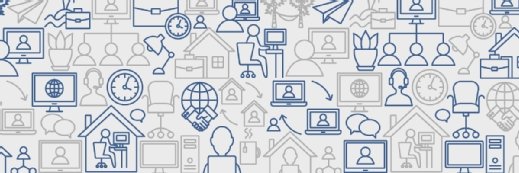
ldprod - Fotolia
VMware Workspace One feature speeds remote onboarding
Several new features for VMware Workspace One are now generally available -- including an option to accelerate remote onboarding.
With new features made generally available this week to its digital workspace product, VMware hopes to ease, among other things, remote onboarding, which has taken on increased importance during the coronavirus pandemic.
The new VMware Workspace One Intelligent Hub features, which came out Tuesday, were first announced at VMworld last year. They include the ability to begin the onboarding process before an employee has officially started, to use mobile devices to gain access to physical offices and to deliver prioritized notifications to workers.
VMware officials and industry observers said the new features will enhance remote-work capabilities at a time when limiting physical interaction is paramount.
"Organizations are now coming to the realization that, 'Yes, my employees can work remotely, but that means I also have to recruit remotely and onboard remotely,'" said Tony Kueh, vice president of product management at VMware.
Day-zero experience
VMware, Kueh said, has increasingly found that companies want to deliver content to future employees before their user accounts are fully set up. Using the new day-zero employee experience feature, IT administrators can provide new hires with limited-access accounts, opening the possibility of handling such things as benefits sign-ups and new device selection before an employee's first day.
 Tony Kueh
Tony Kueh
"The day that [the new hire is] onboarded -- that they have an account set up -- that will then logically map over [the earlier account]," he said. "On [their] day one, [they] don't have to start over -- everything evolves over to a full workspace experience."
VMware describes the day-zero feature as out of the box for iOS, Android, macOS and Windows 10 platforms. Although this feature has been in the works for some time, Kueh said, the outbreak of COVID-19 has underscored the need to simplify and automate the onboarding process. If employees do not need to come into the office to handle tasks such as signing up for benefits, they limit possible exposure -- for both themselves and their new co-workers.
 Michael Disabato
Michael Disabato
"I just extended an offer to a UX designer where ... the entire recruiting process was done over the internet," he said. "We're going to be able to have a zero-touch onboarding experience."
Michael Disabato, vice president and analyst at Gartner, said workspace products like Workspace One allow companies to onboard employees while their physical offices are closed. If an IT department is no longer in the office, he noted, they would likely be without the tools needed to configure a device.
 Dion Hinchcliffe
Dion Hinchcliffe
"[With workspace products,] you don't need to ship [the device] to the IT department, IT doesn't need to put its golden master image on it and then ship it back," he said. "You ship it to the employee, have the employee turn it on and watch as the machine sets itself up."
Dion Hinchcliffe, vice president and principal analyst at Constellation Research, said an employee's early days with a company are formative ones, and more organizations should focus on streamlining the onboarding process.
Intelligent notifications
Kueh said VMware is also trying to address notification clutter with a "For You" tab within Workspace One. Ensuring that important information is not lost in an email inbox, he said, has been a focus for companies.
"If you look at today's social media platforms ... they're trying to cater for engagement and prioritization of the most important things," he said. "Similar things need to be applied to your work world."
A time-sensitive notification, Kueh said, should not be buried under a pile of less-pressing matters, but should instead be moved to the top of the list.
"The ability to intelligently curate that content for you, to deliver to you what is relevant ... that is what we call the 'For You' tab," he said.
The feature could also have some relevance during the pandemic, as organizations work to get information out about closed offices and changing policies, according to Kueh.
"We saw a lot of relevance in this already before COVID-19," he said. "With COVID, this is certainly going to get increased attention."
Disabato said the feature could be useful, although he was unsure how widely companies would adopt the "For You" tab as a way of sending out that kind of information.
Other features
Among Workspace One's newly available features is "Passport," which would allow employees to use their mobile devices to gain access to physical offices, replacing a security badge. Kueh said companies found the badge system cumbersome and ensuring employees who leave the company have returned their badges awkward.
Beyond that, Kueh said, the feature takes its cue from digital security products and policies like the zero-trust model. If a troubling pattern emerges, like employees trying to access an office they haven't been to in some time or to a place they are not allowed, companies are notified.
Disabato said the passport feature continues a trend of consolidating services onto the smartphone. Years ago, tech firms, he said, noted that people left the house with three things: their wallet, their keys and their smartphone.
"They were determined to turn the phone into the wallet and keys," he said. " Apple and Google have done a good job of turning the smartphone into your wallet."
Passport, Disabato said, is a way to move one's keys onto one's smartphone. He added, though, that the feature depended on a company -- or the landlord of its offices -- using the kind of security system that is compatible with it.
Moving forward
Disabato said the workspace market was in a kind of "feature leapfrog" situation, where one vendor adds a new feature only to have competitors leap ahead of it by adding that new feature plus a few more to their products. Ultimately, he said, a company must seek the platform that best suits its needs.
"There are a lot of subtle features within these [workspace] systems," he said. "There are a number of [workspace products] out there that have similar capabilities, but it depends on how they go about implementing them."
Hinchcliffe said he saw the new features as a positive for VMware.
"I think Workspace One's focus on remote work and [the] human journey through the digital work experience is both needed and exciting," he said.








